Art Fairs
7 Extraordinary Artworks to Seek Out at the Newly Returned ADAA Art Show in New York
Here are the works that caught our eye at the newly-returned and much-loved New York fair.
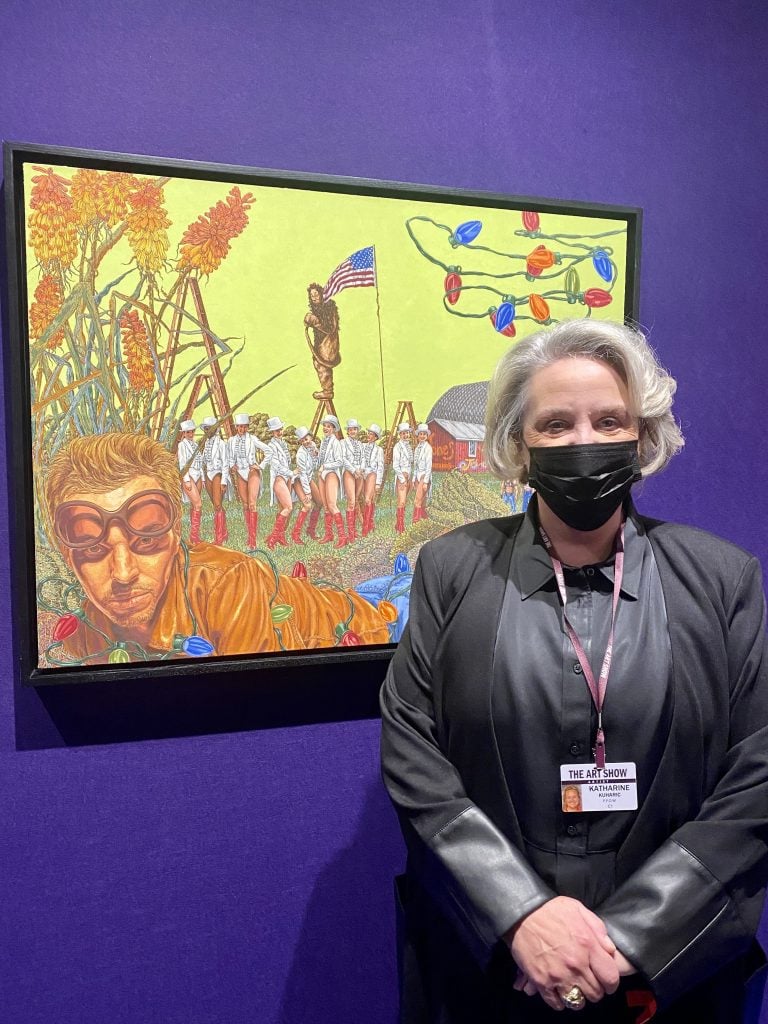
Here are the works that caught our eye at the newly-returned and much-loved New York fair.

Artnet News

The return of the beloved Art Dealers Association of America (ADAA) Art Show to the Park Avenue Armory on Manhattan’s Upper East Side last night (November 3) after nearly two years—the February 2020 version was one of the last art fairs to happen before the pandemic-induced lockdown—drew a spirited but not frenzied crowd that was packed with high-profile collectors, a sprinkling of celebrities and art-world veterans.
Iris Abrons, Agnes Gund, J. Tomilson Hill, Leonard Lauder, and Jerry Speyer were in attendance, and actor David Cross, writer Fran Lebowitz, and Catfish producer Nev Schulman also prowled the floor. We also spotted former auction executive Amy Cappellazzo, former Art Basel Americas director Noah Horowitz, and Maxwell Anderson, president of the Souls Grown Deep Foundation.
As of the VIP preview, and with four public fair days left to go, ticket sales and contributions to the fair’s longtime charity partner—the Lower East Side social services nonprofit Henry Street Settlement—were up 20 percent compared to 2020, and the event had already raised over $1 million, an ADAA representative told Artnet News. All ticket sales throughout the week go to Henry Street Settlement.
Business was brisk and the mood was upbeat as everyone agreed it was good to be back, albeit in a revised time slot, after more than a year of rolling delays and cancellations and a very long stretch of no art events at all. The Artnet News team scoured the aisles to bring you some of the best works on offer.
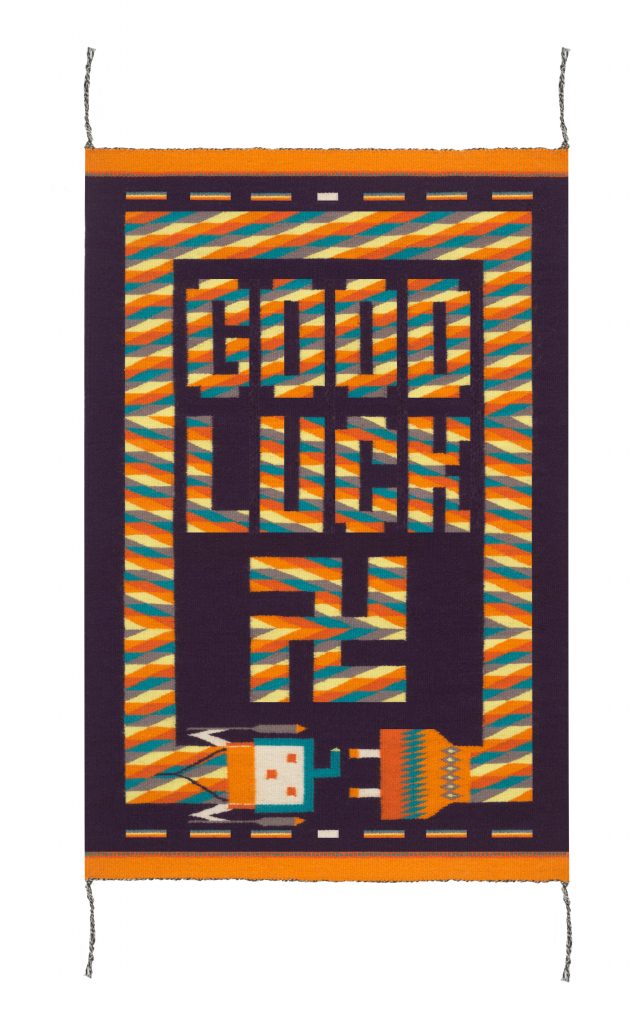
Melissa Cody, Good Luck (2014). Courtesy of the artist and Garth Greenan Gallery, New York.
Booth: Garth Greenan, New York
What It Costs: $150,000
Why It’s Special: Cody is a fourth-generation artist of the Navajo Nation whose Germantown Revival–style tapestries are handwoven on a traditional loom and can take months to complete. The beautifully rendered works mix traditional imagery with modern icons, such as shapes that look like they came out of a video game—or, as in Good Luck, the classic Navajo motif of the Whirling Log, which signifies good fortune. Recognizable today as a swastika, Cody reclaims the symbol in a buoyant color scheme.
“I’m a child of the 1980s,” Cody, who was at the show in person last night, told Artnet News. “I add contemporary flair that’s relevant—like a mark to where I am in my life.” Her compositional process, she explained, “is all done in my head, then I decode the building blocks of the pattern, relaying it to my fingertips and working through the yarn.” Watch for Cody’s upcoming solo show at Garth Greenan in fall 2022.
—Eileen Kinsella
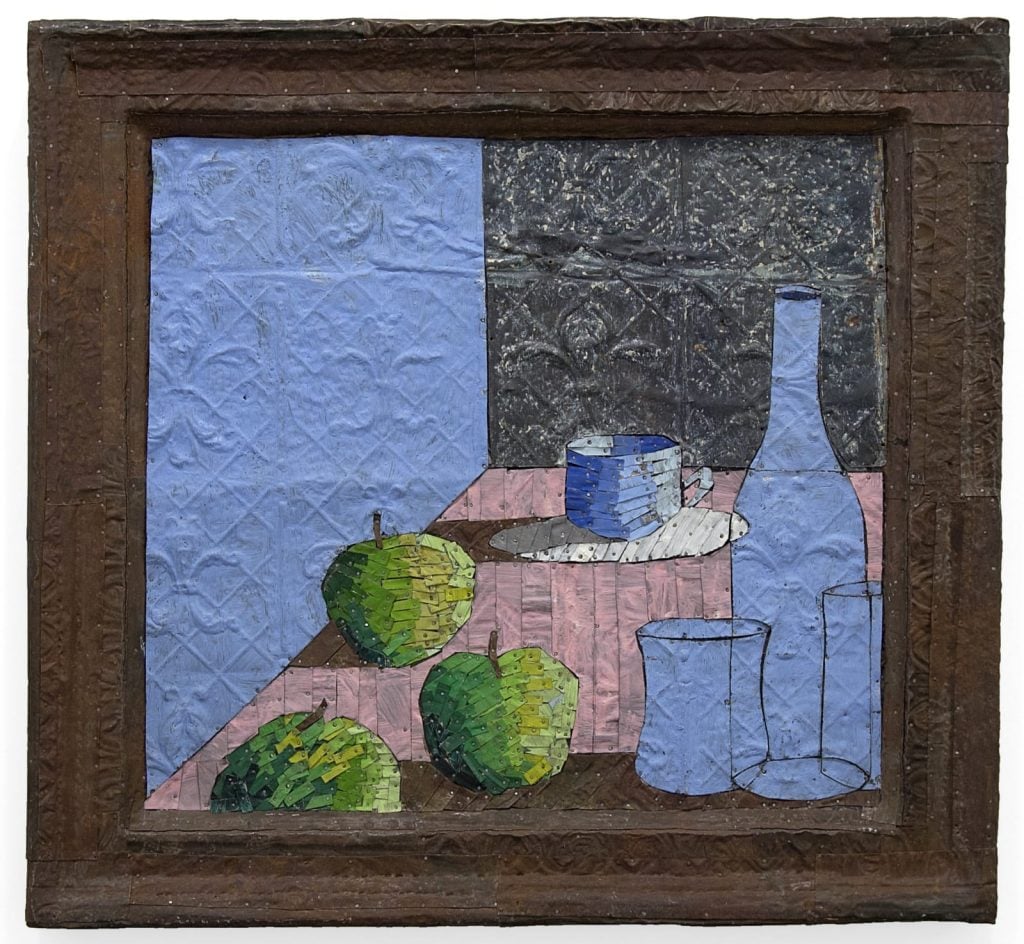
Robert Kobayashi, Glass Cup (1998). Courtesy of Susan Inglett Gallery, New York.
Booth: Susan Inglett Gallery, New York
What It Costs: $40,000
Why It’s Special: Born in Hawaii in 1920, Robert Kobayashi began studying art after serving in the military in World War II, taking classes at the Honolulu Academy of Art and the Brooklyn Museum School of Art. When he moved to New York, Kobayashi was initially part of the Abstract Expressionist scene, but soon began developing his own unique practice in a more figurative vein, inspired by a Pointillist exhibition he saw at the Art Institute of Chicago during a break in basic training.
By day a registrar at the Museum of Modern Art—where his work is in the collection—Kobayashi for four decades also operated his own gallery in a tenement building he purchased on the Lower East Side. Named Moe’s Meat Market, after the former ground-floor tenant, it served as both studio and exhibition space for his “clouage” paintings, made from scavenged cans (sometimes collected by local children) and pressed tin ceilings ripped out of neighborhood buildings and discarded.
Inglett recently began working with the artist’s estate, having met Kobayashi’s widow, Kate Keller, at an opening for gallery artist Beverly Semmes, who once rented studio space in the couple’s building. (Kobayashi died in2015.) The ADAA presentation follows a September 2020 solo show at the gallery, and saw strong interest on opening night, with three of the eight available works finding new homes.
“This is the first time that most folks have seen his work,” Inglett told Artnet News. “It fell through the cracks because he had no interest in selling his work commercially.… He wasn’t untrained, but it has this outsider feel to it.”
—Sarah Cascone
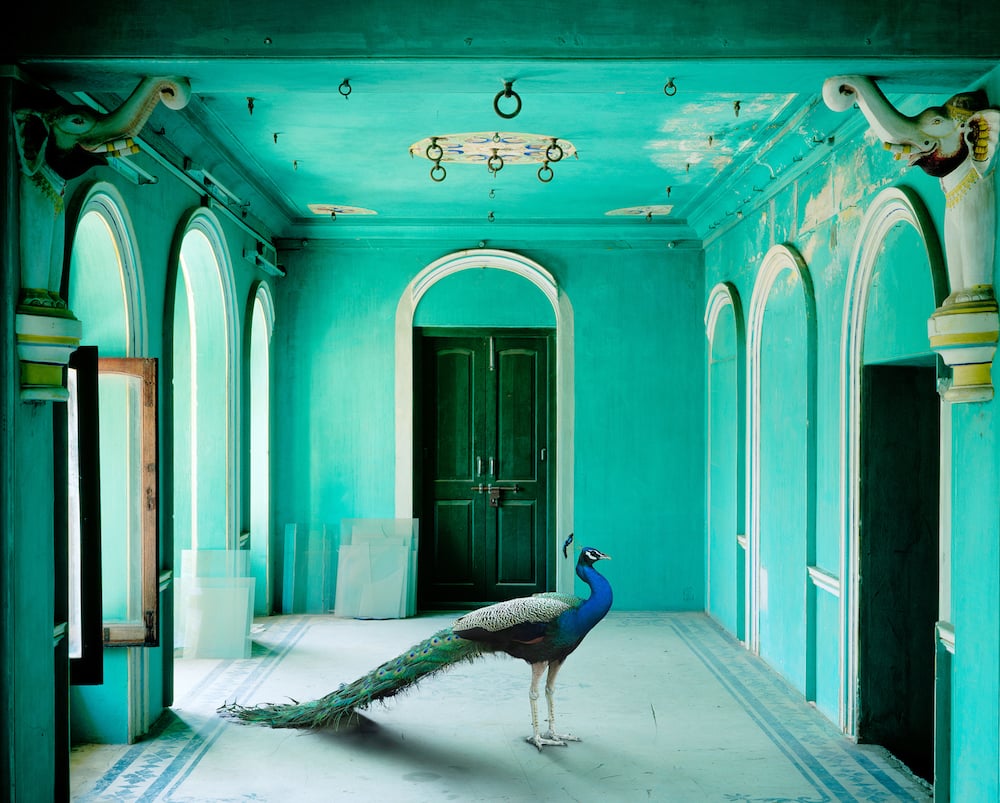
Karen Knorr, The Queen’s Room, Zanana, Udaipur City Palace (2010). Image courtesy the artist and Danziger Gallery.
Booth:Danziger Gallery, New York
What It Costs: $32,000 (largest version, from an edition of 5)
Why It’s Special: When Karen Knorr first started her series of animals in interiors, it was with the use of stand-ins. By the time she started visiting India and photographing there with the help of a passionate collector, she could rely on Photoshop to help create these stunning archival pigment prints. At Danziger’s solo booth of the work at the Art Show, they pop even more by being juxtaposed against an arresting orange wall.
“I usually like white,” explained gallery founder James Danziger, “but it was fun and appropriate to do this.” He also let us in on news that Knorr will have a solo show at some point at the new 4,000-square-foot space he’s opening in Los Angeles next year.
—Eileen Kinsella
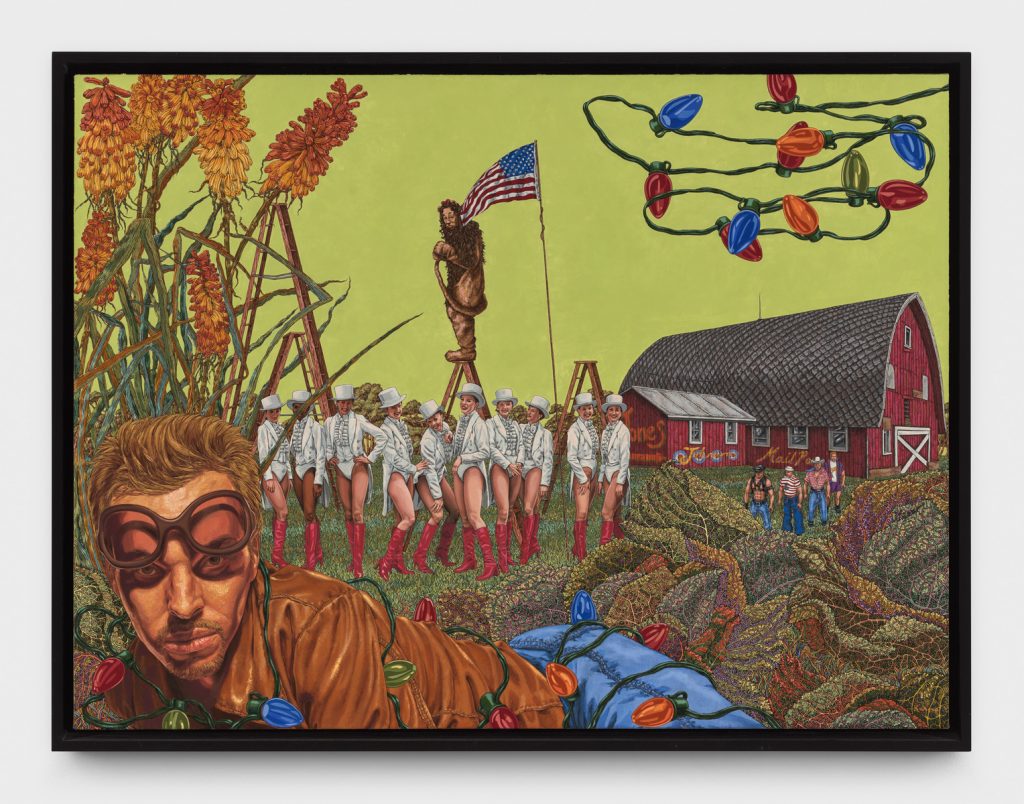
Katharine Kuharic, Fairy Lights (1999). Courtesy of P.P.O.W., New York.
Booth:P.P.O.W., New York
What It Costs: $40,000
Why It’s Special: P.P.O.W., which has represented Katharine Kuharic since 1994, is presenting a survey of three decades’ worth of work by the artist—including paintings that collectors simply weren’t ready for back when the gallery first showed them.
“I made these paintings in the ‘90s because all of my gay men friends were dying,” Kuharic told Artnet News. “I was criticized in the Village Voice for making paintings that they viewed as lesbian utopias.”
“When Kate made these paintings in the ‘90s, they were chipping away all the signifiers of our culture to show the gay underbelly, and people steered away from it,” gallery cofounder Wendy Olsoff added.
The 1999 canvas Fairy Lights was Kuharic’s response to the lukewarm reception, and features one of her collectors draped in Christmas lights, the Radio City Rockettes in drag, and the Cowardly Lion, also known as “the original sissy fag,” Kuharic said. “It’s a kind of ‘fuck you’ to the critics.”
A teacher whose students include Titus Kaphar, Keltie Ferris, and Ebony G. Patterson—“She’s launched a thousand ships,” Olsoff noted—Kuharic has recently been making paintings inspired by her current job at Hamilton College, in upstate New York, where professors are promised a plot in the campus cemetery.
“I started visiting my own grave,” Kuharic said, “and collecting the flora and fauna from the site and painting it.”
—Sarah Cascone
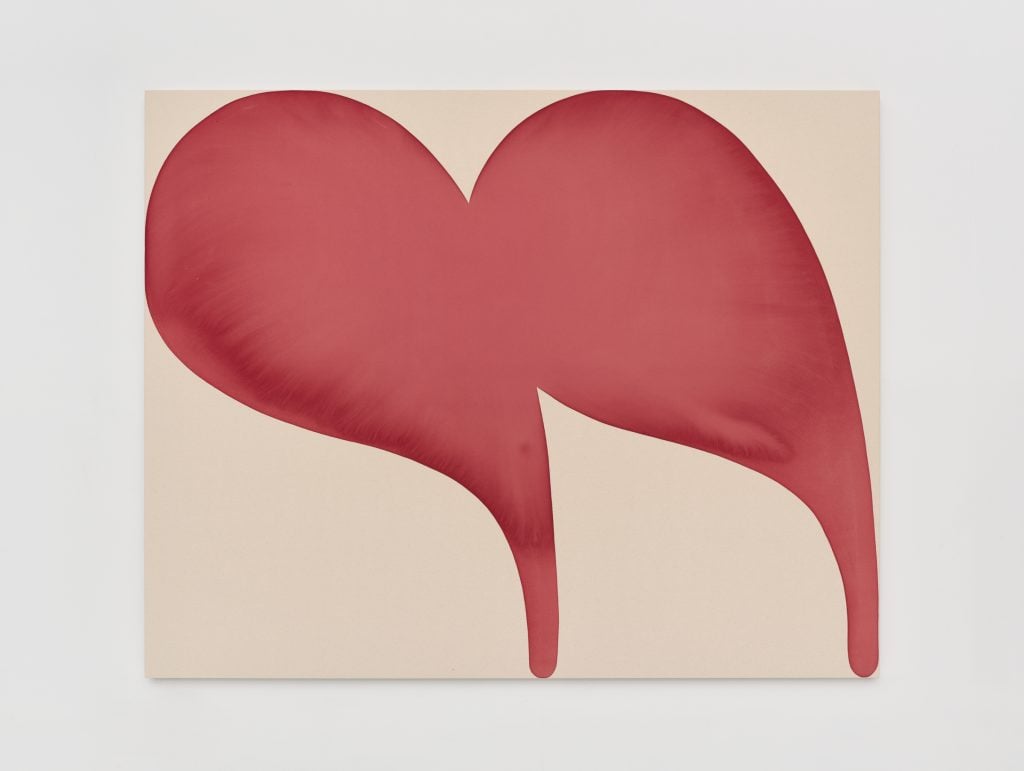
Landon Metz, Untitled (2021). Courtesy of the artist and Sean Kelly Gallery.
Booth: Sean Kelly Gallery, New York
What It Costs: $40,000
Why It’s Special: At 36 years old, Landon Metz was not yet born during the heyday of color-field painting. Yet his paintings are evocative of the masters of the genre—Helen Frankenthaler, Mark Rothko, and in particular, the dye work of Vivian Springford. Sean Kelly brought a solo booth of new work by Metz to the Park Avenue Armory, each created specifically for the Art Show. Several of the muted, minimal abstractions spread out over multiple canvases, but immediately eye-catching is a single canvas in bold red. Metz’s forms are inspired by growing up among the red rocks of Arizona, and the shapes of this untitled piece appear simultaneously organic and man-made, equal parts quotation marks and drops of rain.
—Annie Armstrong
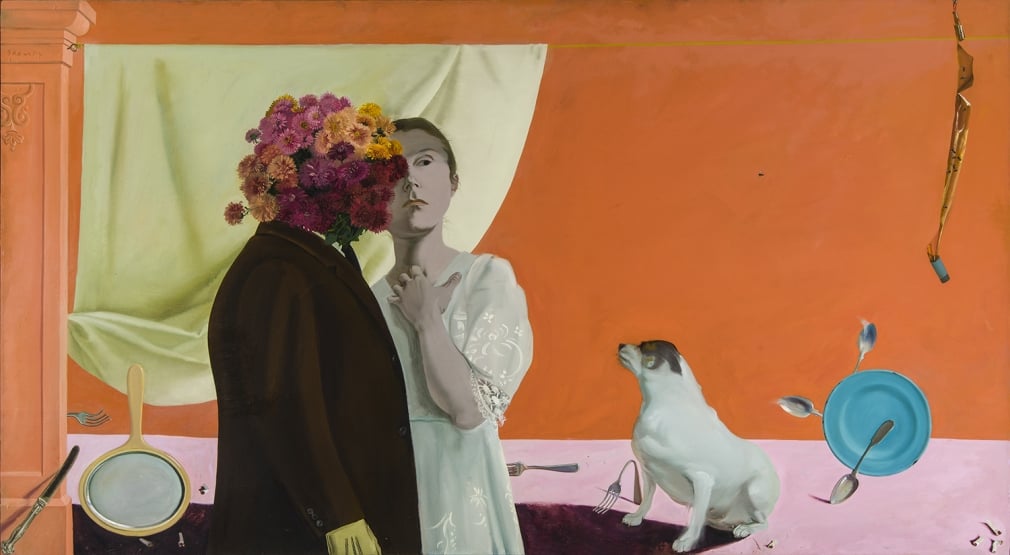
Honoré Sharrer, Nursery Rhyme (1971). Courtesy of Hirschl & Adler Modern, New York.
Booth: Hirschl and Adler Modern, New York
What It Costs: $425,000
Why It’s Special: In recent years, there’s been a surge in appreciation for women artists of the Surrealist movement, such as Leonora Carrington, Leonor Fini, and Dorothea Tanning (who has her own booth at the ADAA, with San Francisco’s Gallery Wendi Norris). Also due for a reassessment is Honoré Sharrer (1920–2009), whose delightfully bizarre feminist paintings combine bold female nudity and household objects behaving in unnatural ways.
“She was a mother happily, a housewife happily, but she also understood how limiting those roles are for women, and her paintings are about empowering women to move beyond those roles,” Ted Holland, Hirschl and Adler Modern’s artist manager and exhibition coordinator, told Artnet News. “There’s a little bit of an edge of subversion.”
“The paintings are all loaded in some way. Every detail is very deliberate and has some kind of symbolism. Things aren’t what they seem at first glance,” gallery director Shelley Farmer added. “She didn’t even explain some of the iconography to her son.”
Working during the height of Abstract Expressionism, Sharrer found success working in a realist style, and her earlier work can be found at such institutions as the Metropolitan Museum of Art and the Museum of Modern Art in New York.
“But her husband was involved in leftist politics and got blacklisted,” Holland said. “It completely derailed her career. She kept painting, but nobody would touch it.”
The gallery is showcasing work from the 1980s and ‘90s at the fair, with the large canvas Nursery Rhyme, with its bold orange background, as its centerpiece. When the artist got her (long-overdue) first retrospective, at the Columbus Museum of Art in 2017, this striking self portrait graced the cover of the exhibition catalogue.
—Sarah Cascone
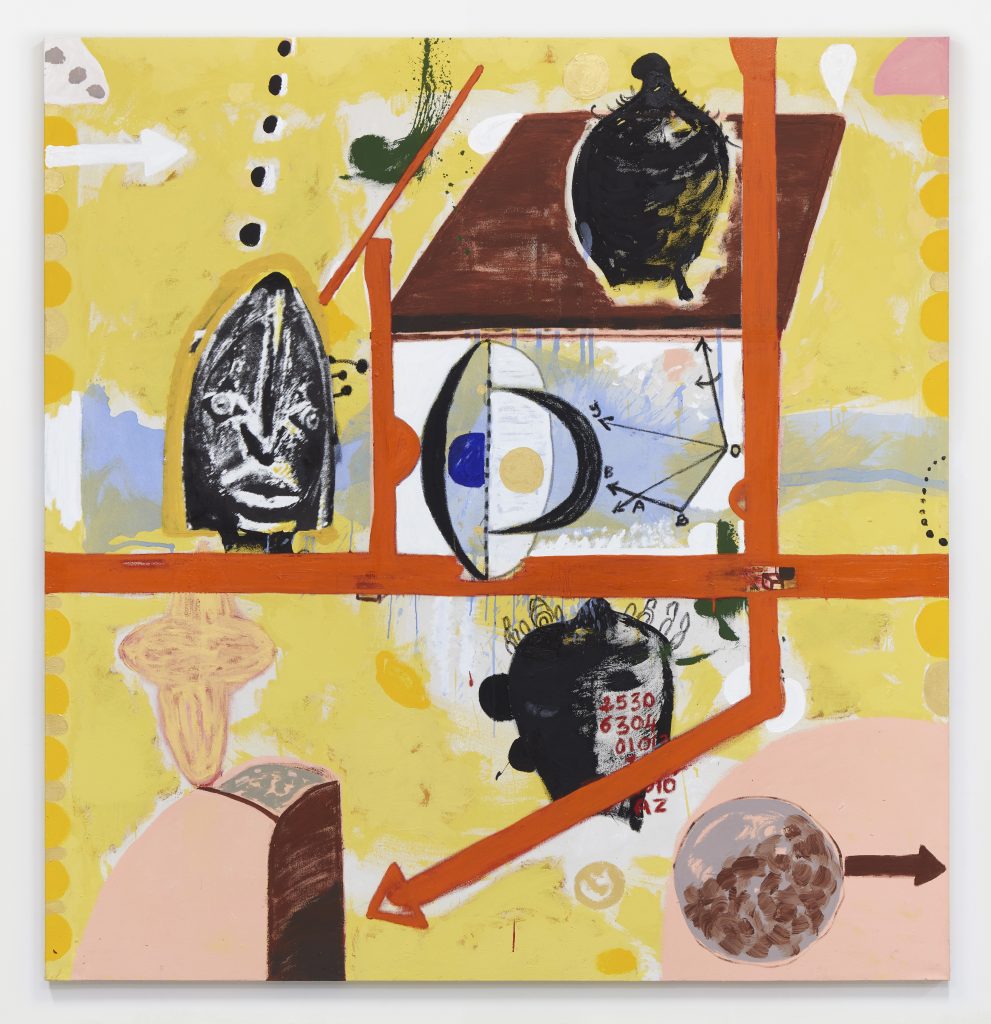
Ouattara Watts, The Visionaries (2014). Courtesy of Karma.
Booth: Karma, New York and Los Angeles
What It Costs: $160,000
Why It’s Special: Ouattara Watts was born in the Ivorian capital, Abidjan, in 1957, and in the 1980s, went to Paris to study painting, where he met none other than Jean-Michel Basquiat. Legend has it that Basquiat was an immediate fan of Watts’ work and single-handedly convinced him to move to New York City, where he still lives and works today. Since then, Watts has gained fame for large-scale canvases painted in a singular, mystical visual language. The Visionaries is a representative work, drawing the eye in with arrows pointing in conflicting directions, foreboding faces, and geometric shapes reminiscent of Hilma af Klint dancing in the background.
—Annie Armstrong